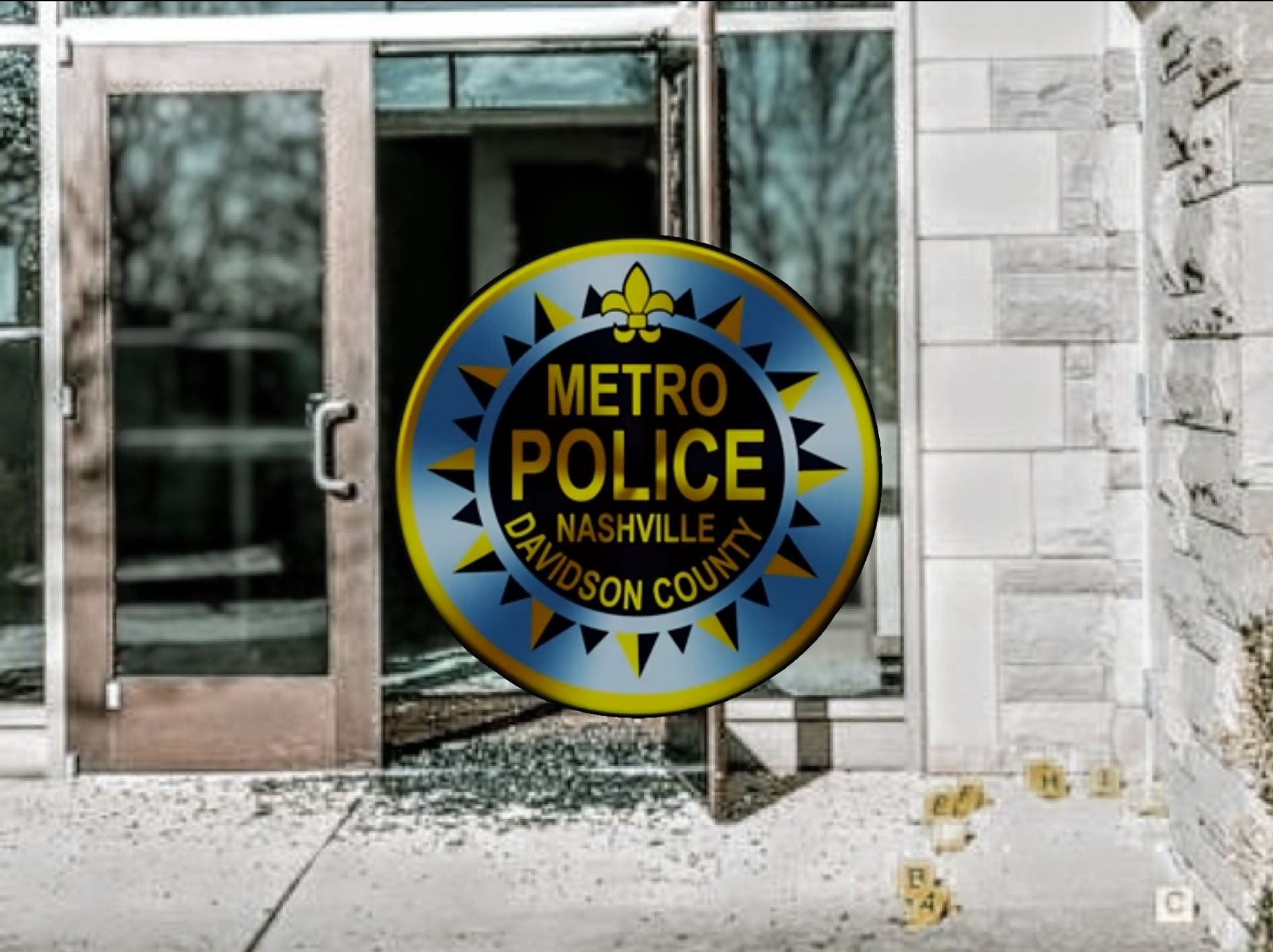
Fourteen Minutes
MNPD’S response to the Covenant Tragedy
Fourteen minutes. That’s the time that elapsed from the first 911 call until the active shooter at Covenant School was neutralized on March 27, 2023. In the interim, six innocent lives were lost. Anyone who watched the released footage, however, knows countless lives were also saved.
The Covenant massacre has had a ripple effect, reaching far beyond the boundaries of Nashville; last Sunday, ministry representatives flew in from as far as Hawaii to join Covenant’s Easter service in a gesture of communion, faith, and hope. But, amid the cloud of grief and turmoil, the brave and immediate response of the Metropolitan Nashville Police Department sets a shining example of tactical excellence in the face of perilous duty.
The day started off uneventfully for Rex Engelbert and Michael Collazo. “It was a regular work day for me,” said Engelbert, speaking soberly during April 4th’s press conference. “. . . I hadn’t finished my coffee and I wanted to complete some administrative tasks.” Collazo’s morning was similar, until he heard the “thousand code go out” from dispatch. Active shooter.
THE PUSH
A day after the shooting, the footage from both men’s body cameras was released to the public. Since Columbine, the tactical approach by law enforcement during active shooter situations has drastically changed. Departments have ditched the practice of waiting for SWAT officers to assemble before breaching a building in favor of a more immediate, proactive response. Every minute counts. Whoever is on hand moves towards the gunfire.
Like many major departments, MNPD trains internally. Recruits go through stress inoculation training, which exposes them to the various tense situations they’ll likely encounter on the job. Once the officers pulled up in front of the church, they immediately began executing the active shooter procedures ingrained in them through diligent training.
“Give me three. Let’s get three,” Officer Engelbert yelled as he led his team through Covenant’s Fellowship Hall. Throughout the footage you can see officers leaning into one another, urging each other forward as they navigated the deadly situation. “Right, right, right,” shouted Detective Collazo as the distorted bang of gunfire echoed through the hallways. Without hesitation, Engelbert approached the shooter after being urged forward by Collazo who noticed he had a rifle with a Low Power Variable Optic (LPVO) on it which gave him more range. “Not knowing where the shooter was, and the distance that we would possibly encounter with the shooter, I asked Officer Rex to push forward for us,” he recounted.
THE AFTERMATH
With the target neutralized and sulfurous gunsmoke still hanging in the air, reality began to set in. “The call Monday literally impacted hundreds of members of our police department,” MNPD Chief John Drake told the press corps. “I watched video of officers who went into the school [and] took [the] pulse of the victims, hoping there was life in these people.” Dispatchers were barraged by frantic 911 calls. Officers helped coordinate the reunification site, where distraught parents prayed for the safety of their children, and hours upon hours of horrific security and bodycam footage were waiting to be combed through by personnel. “When I was relieved of duty on that scene, I was told to sit in my car,” said Engelbert. “It was pretty difficult because I could tell there was more work to be done.”
WHAT WE DON’T TALK ABOUT
Time doesn’t stop when a tragedy occurs. As the community, city, state, and nation grieves, the world just seems to keep on spinning. Meanwhile, the lasting impact of such events, including the mental impact on officers involved in them, tends to get lost in the shuffle. Just three years after the shooting at Columbine High School, seven of the ten Jefferson County Regional SWAT team members who responded to the massacre had either requested reassignment or retired. Post-traumatic stress disorder, disassociation, and guilt are symptoms regularly reported by first responders who have been exposed to mass violence.
“We struggled [for] a little bit of relief from the strain that was caused— obviously from seeing very, very terrible things,” said MNPD Detective Sergeant Jeff Mathes before redirecting the topic and highlighting the phenomenal personal and professional support systems surrounding him.
“I can tell you that, just like every other officer that was out there, it’s not just us,” said Collazo. “My wife’s going through this, my family’s going through this, officer Rex’s fiance’s going through this, Sergeant Mathes’ wife’s going through all this— and it’s tough.”
“Yesterday, while we saw the worst of humanity,” Governor Lee said during his address after the tragedy. “We also saw the best of humanity in the police officers who ran into danger, directly toward a killer with no regard for their own life thinking only about those kids, those teachers, those administrators.”
Chief Drake, however, cut straight to the sense of duty that resonates with all officers who reverently sign up for the job: “I always say this to our men and women. No one ever said it would be easy, [but] it will be worth it. I’m proud of our men for what they did.”
